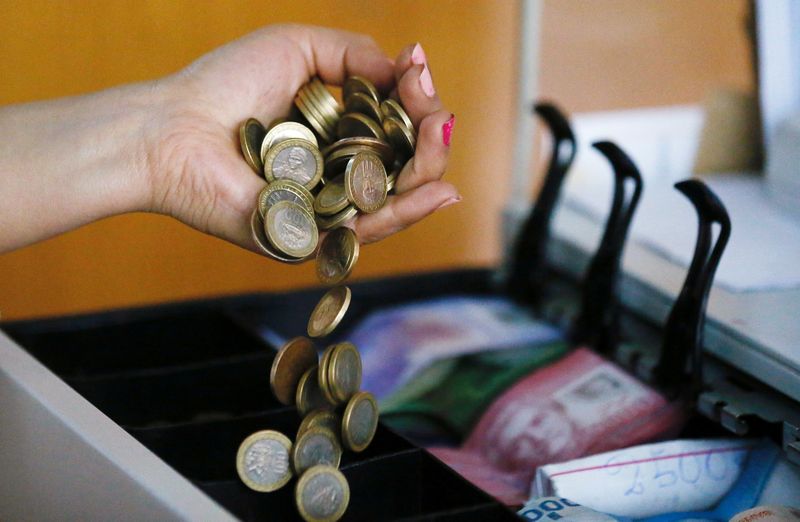By Gabriel Burin
BUENOS AIRES (Reuters) - The Chilean peso is set for a period of stability as economic and political worries continue to fade, validating the central bank's decision to unwind an intervention program implemented last year to calm market turmoil, a Reuters poll showed.
In July last year, the peso plunged to a record low of 1,050 per U.S. dollar in reaction to a sharp drop in the price of copper, Chile's top export, that added to concerns over a proposed reform of its market-friendly constitution.
But the peso recovered in the second half of 2022 and has settled close to 800 since the start of this year thanks to the rejection of constitutional changes as well as better demand for metals after China reopened its economy.
The currency is forecast to remain near 800 in coming months, trading at 811 per dollar in one year, where it was on Tuesday, according to the median estimate of 14 foreign exchange experts surveyed April 28-May 3.
"We stay constructive on the peso versus its emerging market peers, with Chile's imbalances adjusting amid a supportive global environment," Barclays (LON:BARC) foreign exchange strategists wrote in a report last week.
Another positive factor for the peso is the refusal by lawmakers to move forward with a tax overhaul devised by the government of President Gabriel Boric to finance reforms in pension and health care systems.
Similarly, technical and political challenges could postpone for years any advance in Boric's idea to nationalize the Chilean lithium industry, which holds the world's largest reserves of the metal.
The central bank's move last month to start reducing its forward dollar sales operations program "is quite gradual in nature, and we think it should have limited impact once the news is absorbed," Barclays said.
In contrast, the outlook for Argentina's peso continues to worsen, facing an additional 50% depreciation to 450 per U.S. dollar in one year in the heavily-regulated official market as the economy teeters on the edge of a deeper crisis.
In Brazil, sentiment towards President Luiz Inacio Lula da Silva's fiscal plans remains broadly neutral, with the Brazilian real seen trading 2.0% weaker at 5.14 per dollar in one year compared to 5.04 on Tuesday.
In Mexico, the peso is set to drop 6.7% in 12 months to 19.25 per dollar from 17.96 this week, reflecting a correction for inflation. Year-to-date it has gained 8.4%, while the real is up 4.9%, the Chilean peso 4.6% and the Argentine peso down 21%.
(For other stories from the May Reuters foreign exchange poll:
(Reporting and polling by Gabriel Burin in Buenos Aires; additional polling by Sarupya Ganguly and Sujith Pai in BENGALURU; Editing by Sharon Singleton)
